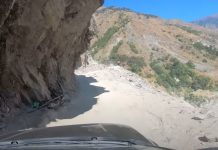Commercial aircraft have, at the very least, wheel brakes for stopping. Sometimes the pilots apply the brakes themselves by pressing the “toe brakes” which, as the name suggests, are activated by the pilot depressing the top part of the rudder pedals with the top part of their feet. From a Cessna-150 to a Boeing-747, every airplane I’ve ever flown has had this rudder/brake combination.
Video -Antonio Diaz de la Serna
Some aircraft have auto-brakes and the pilot can set the intensity (low, medium, etc.). Part way through the landing roll, the pilot will apply pressure to the brakes and that will kick off the auto-brakes. Leaving the auto-brakes on all the way to a stop is not desirable as the brakes may overheat. Setting auto-brakes is just a matter of setting a switch before takeoff and landing. Auto-brakes also are used on takeoff when available and will apply heavy braking automatically in the event the takeoff is aborted above a certain speed.
Most (but not all) commercial jets have reverse thrust, which redirects engine thrust to help stop the aircraft. One jet I flew while in Iran in the late 70’s had no reverse thrust. That was a Fokker 28, also used in the United States. It’s about the size of a Douglas DC-9.
When commercial jets are certified, reverse thrust is not used in the testing procedure, so reverse is “icing on the cake.” Reverse is attained by smaller levers attached to the thrust levers. Usually there is a mechanical stop to prevent reverse thrust from being applied inadvertently in the air, but again, there are exceptions. The DC-8, for instance, has airborne reverse thrust capability to help the airplane slow down while airborne.
In addition, commercial jets usually have “spoilers,” which are panels that flip up on the wings to help “spoil” the lift. If you’ve ever looked out at the wing just after landing, you’ve probably seen them. We can use “speed brakes” in the air by pulling the same lever, but only certain panels are used in the air while others are locked out.
A lever next to the throttle levers may be “armed” so that it deploys the spoilers automatically after landing or when the pilot manually pulls the lever on some aircraft. Some planes will deploy the spoilers automatically after landing, whether the pilot remembers to arm them or not.



















